By David Biello
ScientificAmerican.com
March 30, 2010
It is because of places like DISH (formerly known as Clark) and similar sites from Colorado to Wyoming, that the U.S. Environmental Protection Agency (EPA) has launched a new review of the practice known as hydraulic fracturing, or "fracking". From compressor stations emitting known human carcinogens such as benzene to the poor lining of wells after drilling that has led some water taps to literally spout flames, the full set of activities needed to produce natural gas gives rise to a panoply of potential problems. The EPA study may examine everything from site selection to the ultimate disposal of the fluids used in fracking.
View a slide show of hydraulic fracturing
The picture from DISH is not pretty. A set of seven samples collected throughout the town analyzed for a variety of air pollutants last August found that benzene was present at levels as much as 55 times higher than allowed by the Texas Commission on Environmental Quality (TCEQ). Similarly, xylene and carbon disulfide (neurotoxicants), along with naphthalene (a blood poison) and pyridines (potential carcinogens) all exceeded legal limits, as much as 384 times levels deemed safe. "They're trying to get the pipelines in the ground so fast that they're not doing them properly," says Calvin Tillman, DISH's mayor. "Then you've got nobody looking, so nobody knows if it's going in the ground properly…. You just have an opportunity for disaster here."
DISH sits at the heart of a pipeline network now tuned to exploit a gas drilling boom in the Fort Worth region. The Barnett Shale, a geologic formation more than two kilometers deep and more than 13,000 square kilometers in extent, holds as much as 735 billion cubic meters of natural gas—and the city of Fort Worth alone boasts hundreds of wells, according to Ed Ireland, executive director of the Barnett Shale Energy Education Council, an industry group. "It's urban drilling, so you literally have drilling rigs that are located next door to subdivisions or shopping malls."
Although the first well was drilled in 1982, it took until 2002 for the boom to really get started. Now there are more than 14,000 wells in the Barnett Shale, thanks to a combination of being able to drill horizontally and fracking—pumping water at high pressure deep beneath the ground to literally crack the rock and release natural gas.
"They pump a mixture of water and sand—and half a percent of that is some chemicals, like lubricants," Ireland explains. "They pump that into the formation at a very high pressure. Cracks it just like a windshield. And the cracks go out a couple hundred feet on either side and that forms the pathway for the natural gas to migrate to the well bore and up to the surface."
All that natural gas may prove a boon to a U.S. bid for energy independence. Plus, burning natural gas to produce electricity releases roughly 40 percent less of the greenhouse gas carbon dioxide than burning coal. So the question is: Can extracting that natural gas be done safely?
Water pollution
As Ireland notes: "There's never been a documented case of contaminated water supply." That is technically true, but residents of Dimock, Pa., may disagree. That town sits atop the Marcellus Shale—a giant natural gas–laden rock formation that stretches from Tennessee to New York State—and the kind of extraction now going on in Texas is just getting started there. In Dimock, leaks from badly cased wells contaminated drinking water wells—and one even exploded.
It all comes down to the fact that fracking involves a lot of water. There's the at least 11.5 million liters involved in fracking a well in the first place. There's the brine and other fluids that can come to the surface with the natural gas. And there's the problem of what to do with all that waste fluid at the end of the day.
In Dimock's case, Houston-based Cabot Oil and Gas has spilled fracturing fluid, diesel and other fluids, according to Pennsylvania's Department of Environmental Protection. And elsewhere in the state fracturing fluid contamination has been detected in the Monongahela River, which is a source of drinking water. In more common practice, companies dump used fracking fluid back beneath the surface, usually injecting it into other formations beneath the shale. For example, in the case of the Barnett Shale, disposal wells send that water into the deeper Ellenburger Formation.
But there's also the problem of what's actually in the fracking fluid. EPA tests in Wyoming have found suspected fracking fluid chemicals in drinking water wells, and a study by the New York State Department of Environmental Conservation identified 260 chemicals used in the process—a review undertaken as the state decides whether to allow such drilling on lands comprising the watershed providing New York City with its drinking water. And Dow Chemical notes that it sells biocides—antimicrobial poisons—to be included in the mix. But companies zealously guard the secret of what exactly makes up their individual "special sauce." It is one of the ways the companies distinguish themselves.
(See Flower Mound Citizens Against Urban Drilling March 30th post: Natural Gas Drilling Companies Searching for Hydraulic Fracturing Alternatives)
Air pollution
In places where required by law, natural gas companies also distinguish themselves by how they filter out air pollutants. "There's [vapor recovery units] that they can put in place to cut out 95 percent of the emissions from a site," Tillman says. "In states where it's been mandated they do it, and they do it willingly—and they do presentations that show how they're going to comply and how their vapor recovery unit is better than the next guy's vapor recovery unit."
That obviously does not happen in DISH, and a big part of such negligence is a lack of appropriate oversight. For example, after it received complaints the TCEQ sent an SUV with a gas detection unit to drive around Dish for a couple of hours. Despite widespread complaints of odor, the commission found "no leaks that would be detectable to the human nose," Tillman says. "So obviously they're trying to deceive us, they're treating us like we're blooming idiots."
As a result, DISH conducted its own air quality test—at a cost of 15 percent of the town's annual budget of $70,000—that revealed the toxic mix of air pollution. Subsequently, the town petitioned and won the right to install one of seven permanent air monitors in the entire state of Texas. "It's not just writing regulations," Tillman notes. "Somebody has to go out and make sure they're following regulations. And when they're not following regulations, the punishments need to be swift and harsh."
That problem is not confined to the TCEQ or the Railroad Commission of Texas, which through a quirk of history regulates the Lone Star State's oil and gas industries. National laws, like the Safe Drinking Water Act, have been specifically amended to exempt hydraulic fracturing from federal regulation. Yet a New York City analysis of fracking has found that whereas a single fractured natural gas well may do no harm, the hundreds required to exploit shale gas "brings an increased level of risk to the water supply." Plus, although fracking occurs deep below freshwater aquifers, natural cracks "serve as conduits that facilitate migration of contaminants, methane or pressurized fluids."
And it's in the air, too. The Texas Health and Human Services Commission is now conducting tests on roughly 30 residents of DISH to see what might be the human health impacts of this air pollution exposure. And the TCEQ has found high air pollution levels in other nearby towns, such as Decatur, and at individual residences.
Climate savior?
Nevertheless, a 2004 study by the EPA found hydraulic fracturing harmless and the oil industry has been using a roughly similar extraction method since the 1940s. If shale gas can be extracted safely, it might go a long way to cutting back on U.S. emissions of greenhouse gases, as acknowledged at the U.N. Copenhagen climate conference this past December by environmentalists such as Christopher Flavin of the Washington, D.C.–based World Resources Institute. "Compared with coal, natural gas allows a 50 to 70 percent reduction in greenhouse gas emissions," he said. "It's a good complement to the wind and solar generators that will be the backbones of a low-carbon electricity system."
Already, the U.S. produces nearly 600 billion cubic meters of natural gas annually, according to the U.S. Department of Energy (DoE), and it estimates proved reserves of natural gas of at least 6.7 trillion cubic meters. The Marcellus Shale alone may have at least 10 trillion cubic meters.
A host of companies have moved in to exploit this resource, and a "few hundred" wildcatters operate in the Barnett Shale alone, according to Ireland. "The wildcatters are the small companies, they have a low overhead, and they can afford to go out and take some risks," he says. "That's been the history of the business and I think that will continue." But major companies have also taken an interest; ExxonMobil hopes to buy natural gas producer XTO Energy pending regulatory approval.
That's because natural gas is becoming more and more the fuel of choice for generating electricity; the DoE expects 21 percent of U.S. electricity to be derived from natural gas by 2035, and by 2034 power plant builder and consulting firm Black & Veatch expects almost half of all U.S. electricity to come from burning natural gas. "I don't see gas shales having an insurmountable environmental problem that is expensive to fix," says Mark Griffith, head of Black & Veatch's power market analysis.
And the gaseous fossil fuel is used for everything from home heating to making plastics and fertilizer. "It's good that we've discovered all this natural gas, because we're going to need it to generate electricity," Ireland says. "Twenty years from now, we're still going to need all the natural gas we can get."
Some, such as Texas oil- and gas-millionaire T. Boone Pickens, have even suggested using this new surfeit of natural gas to help wean the U.S. off foreign oil, turning it into vehicle fuel. Of course, compressed natural gas is already the fuel of choice for many metropolitan area bus fleets.
Ultimately, however, shale gas extraction—and the hydraulic fracturing that goes with it—will have to be done right. "If something comes out that you're poisoning the population, it's going to be a very bad thing," Ireland notes.The EPA anticipates finishing its latest study of the practice by 2012. "Six months ago, nobody knew that facilities like this would be spewing benzene," Tillman notes. "Someone could come in here and look at us and say, 'You know what? They've sacrificed you. You've been sacrificed for the good of the shale.'"
LINK
Editor's Note: David Biello is the host of a forthcoming series on PBS, tentatively titled "The Future of Electricity". The series will explore the coming transformation of how we use and produce electricity, along with its impact on the environment, national security and the economy. He conducted the interviews for this article in conjunction with his work on that series.
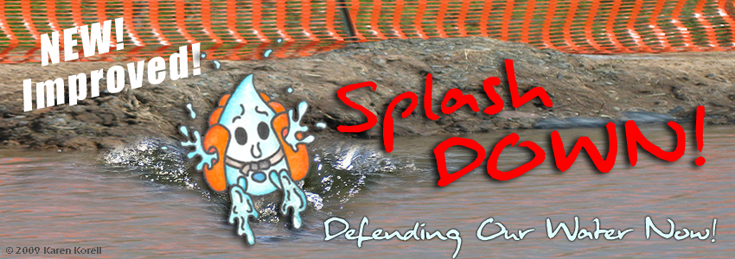



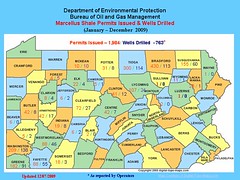

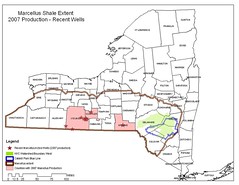

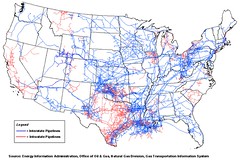
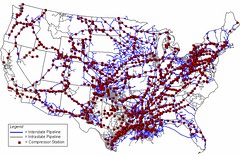



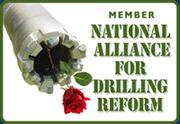





You have provided enough information to prevent gas leakage.
ReplyDeleteThanks for the post
Gas leak detection